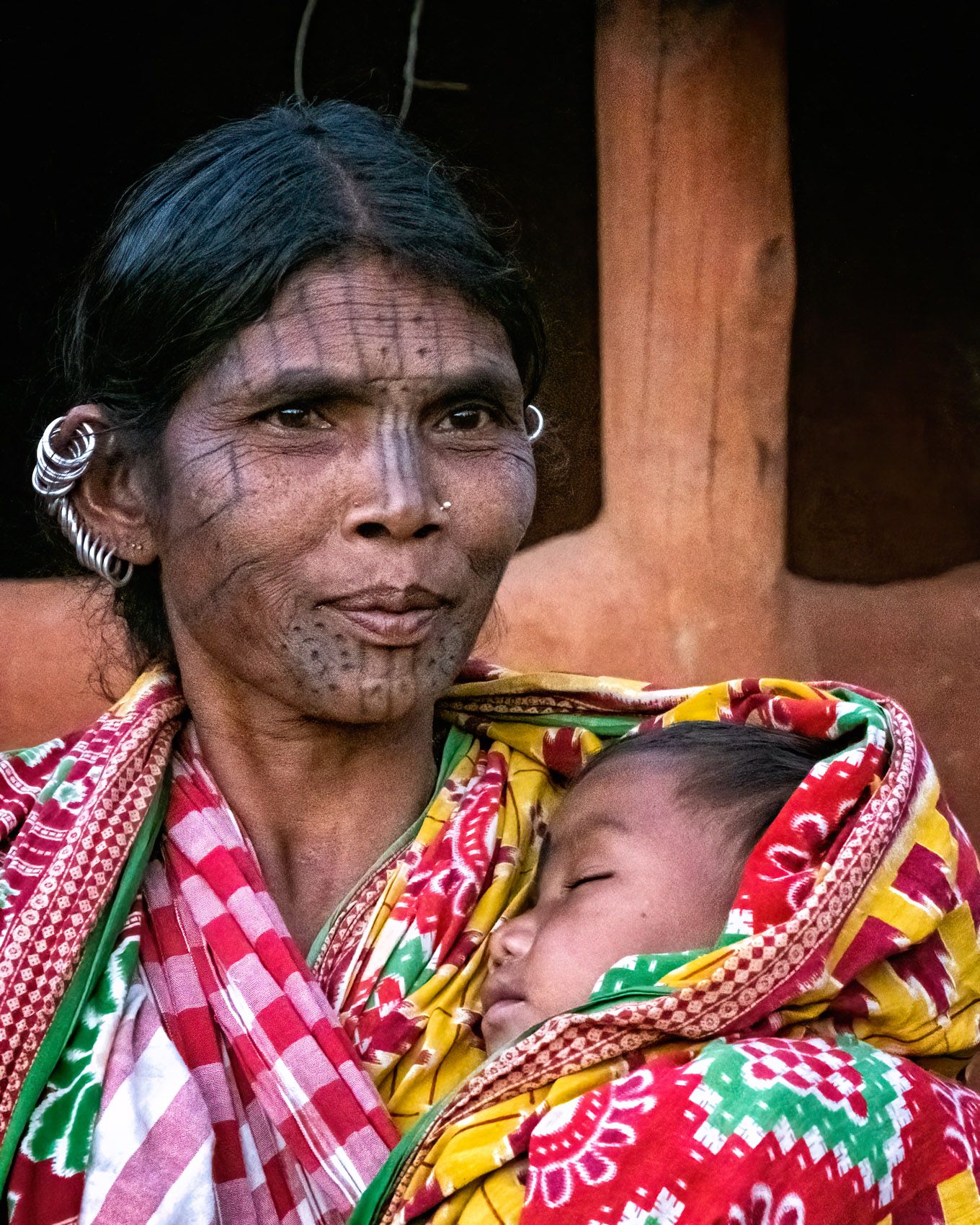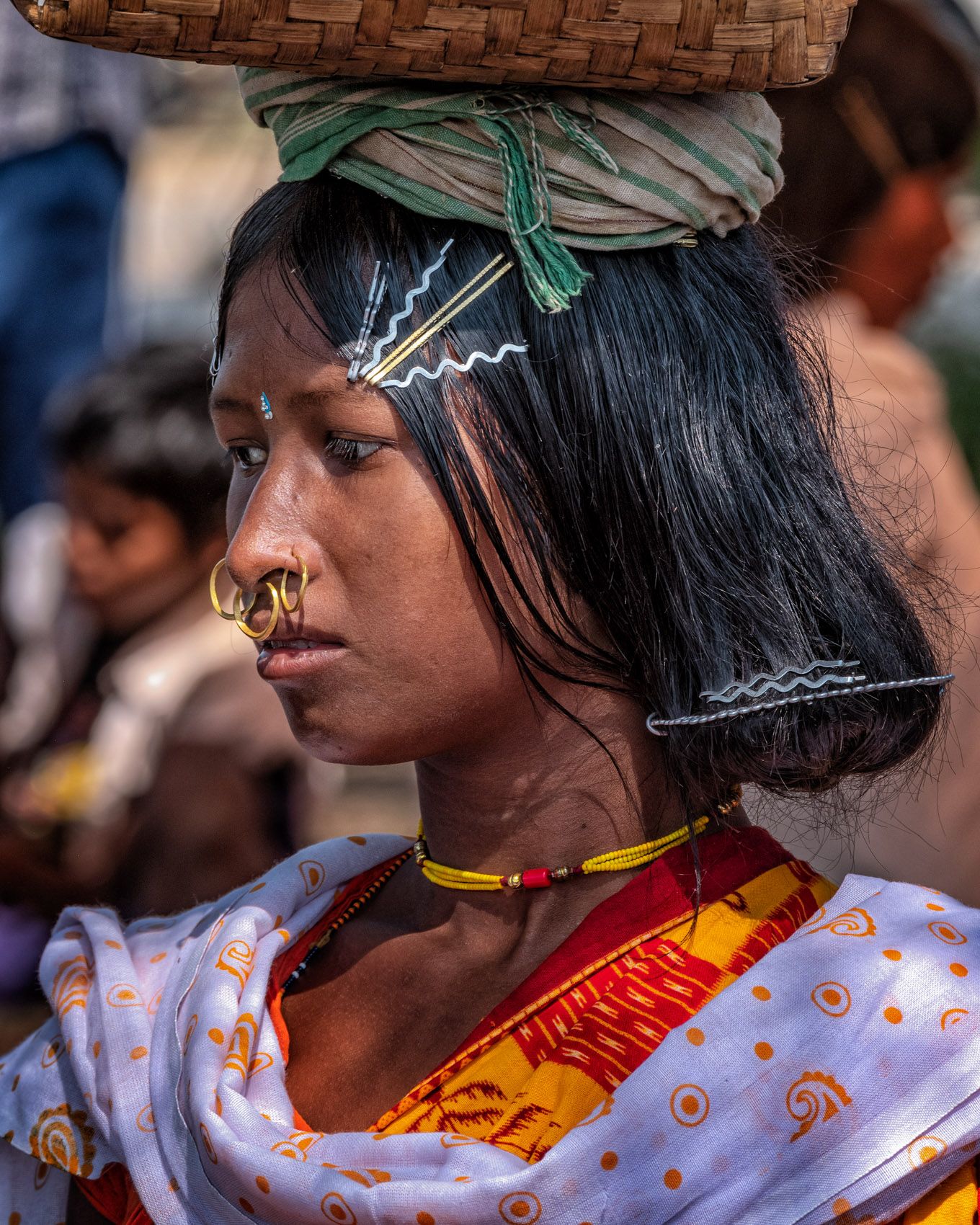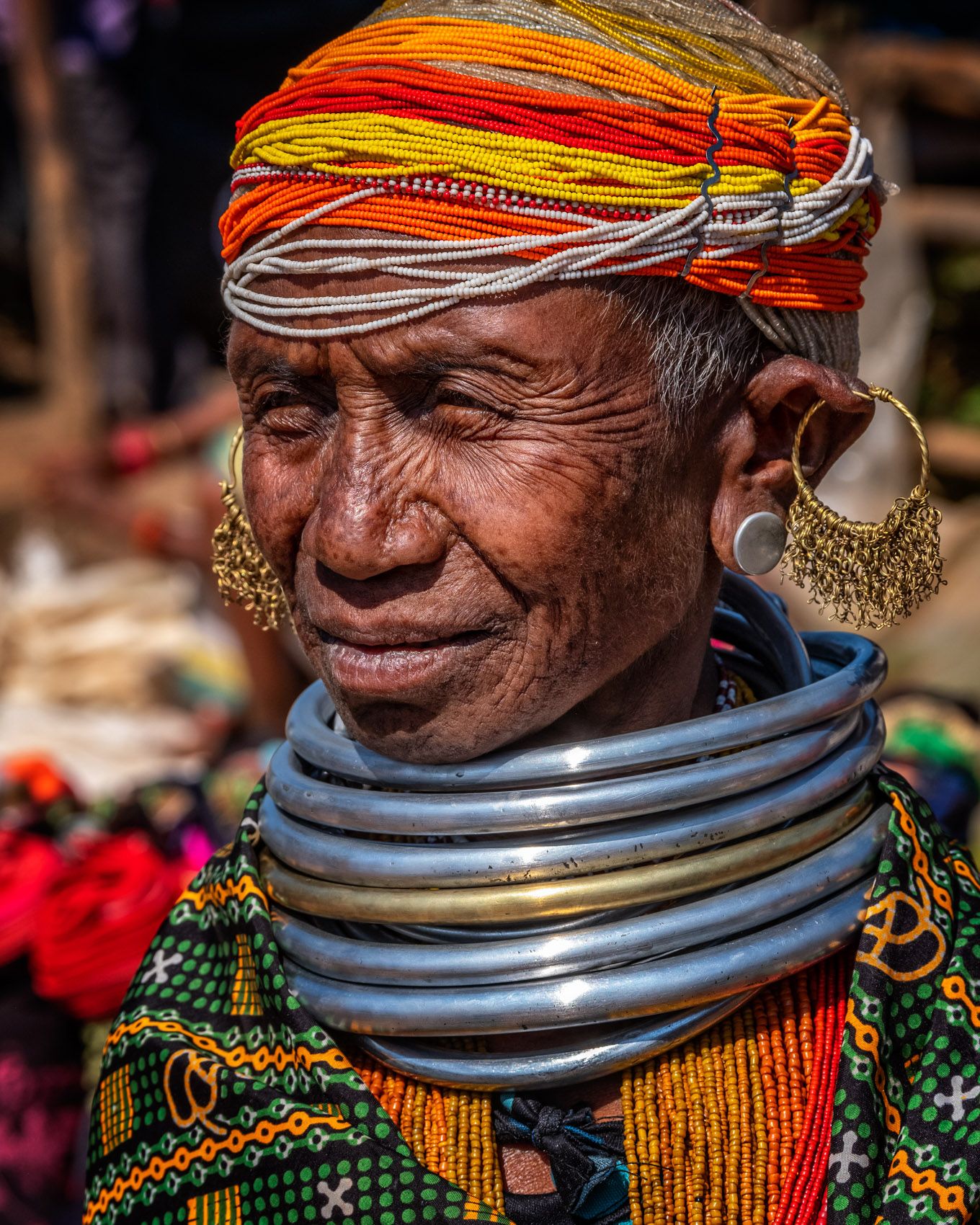TRIBAL ODISHA AND CHHATTISGARH I: Portraits of Adivasi Women in Odisha
Adivasi is a HIndi equivalent of “indigenous” that came into use in the 20th century as a collective term for all the tribal groups of the Indian subcontinent, now numbering over a hundred million people. Their histories are obscure but it is believed that various indigenous tribal groups were pushed into the hill and forest areas by the invasion of Indo-Aryan tribes three millenia ago. Although they are not integrated into Hindu caste society, there are many points of contact and mutual influence between Adivasi religion and mainstream Hinduism. Adivasis are by no means a homogenous group: On the contrary, the term encompasses more than two hundred groups with distinct cultural practices and speaking more than a hundred distinct languages.
Some sixty per cent of India’s adivasis live in the adjoining states of Odisha and Chhattisgarh, where most continue to live in villages and practice agriculture and woodland foraging. Poverty, disease and alcoholism are endemic problems in many of these communities, some of which are accessible only to locals. At the center of social and economic life are the district markets (haats) held daily on regular schedules in different villages, where people come—usually by foot, and from all over the area—to buy, sell, and socialize.
Visitors to tribal India find the most conspicuous enduring element of “traditional culture” in the distinctive dress, hairstyles and decoration maintained by the women of particular groups. The portraits in this portfolio—from Odisha, where I encountered more striking styles of dress and decoration than I did in Chhattisgarh—give a sense of the large range of cultural styles among tribes as well as the strong conformity of style within the group. These images were made in both markets and villages, and include women and children from the following tribes: Kutia Kondh, Dongoriya Kondh, Desia Kondh, Gadabba, and Bonda.


















